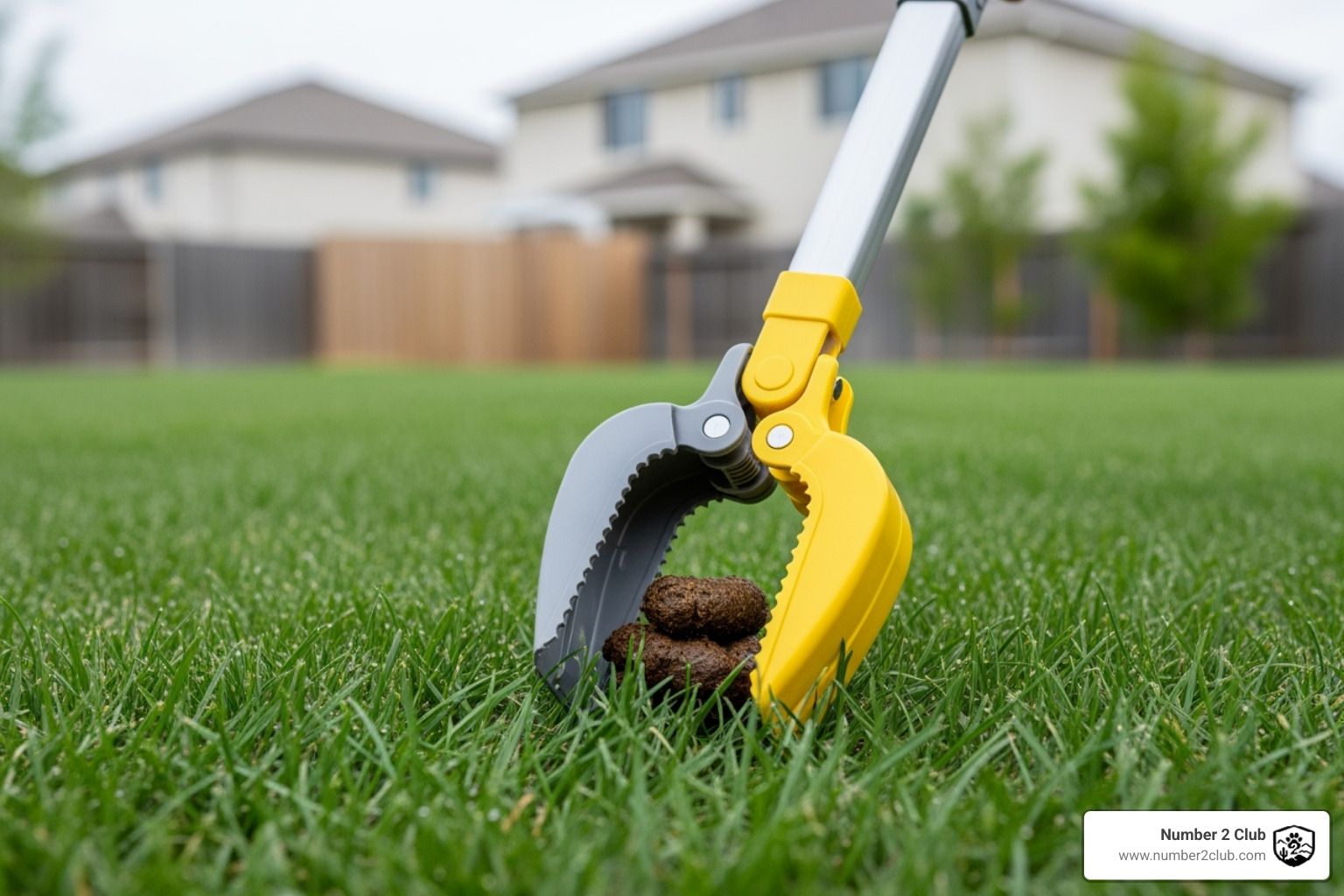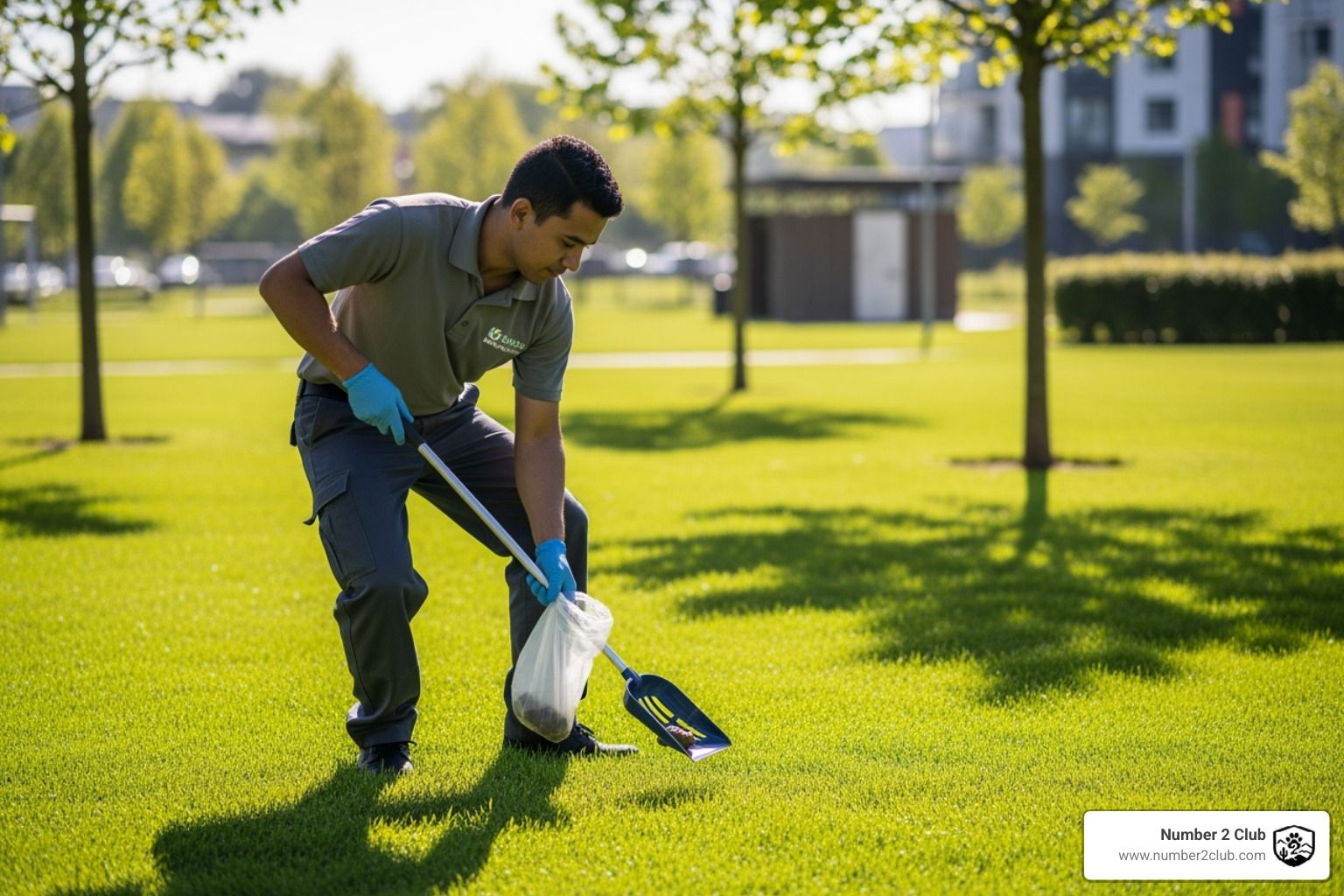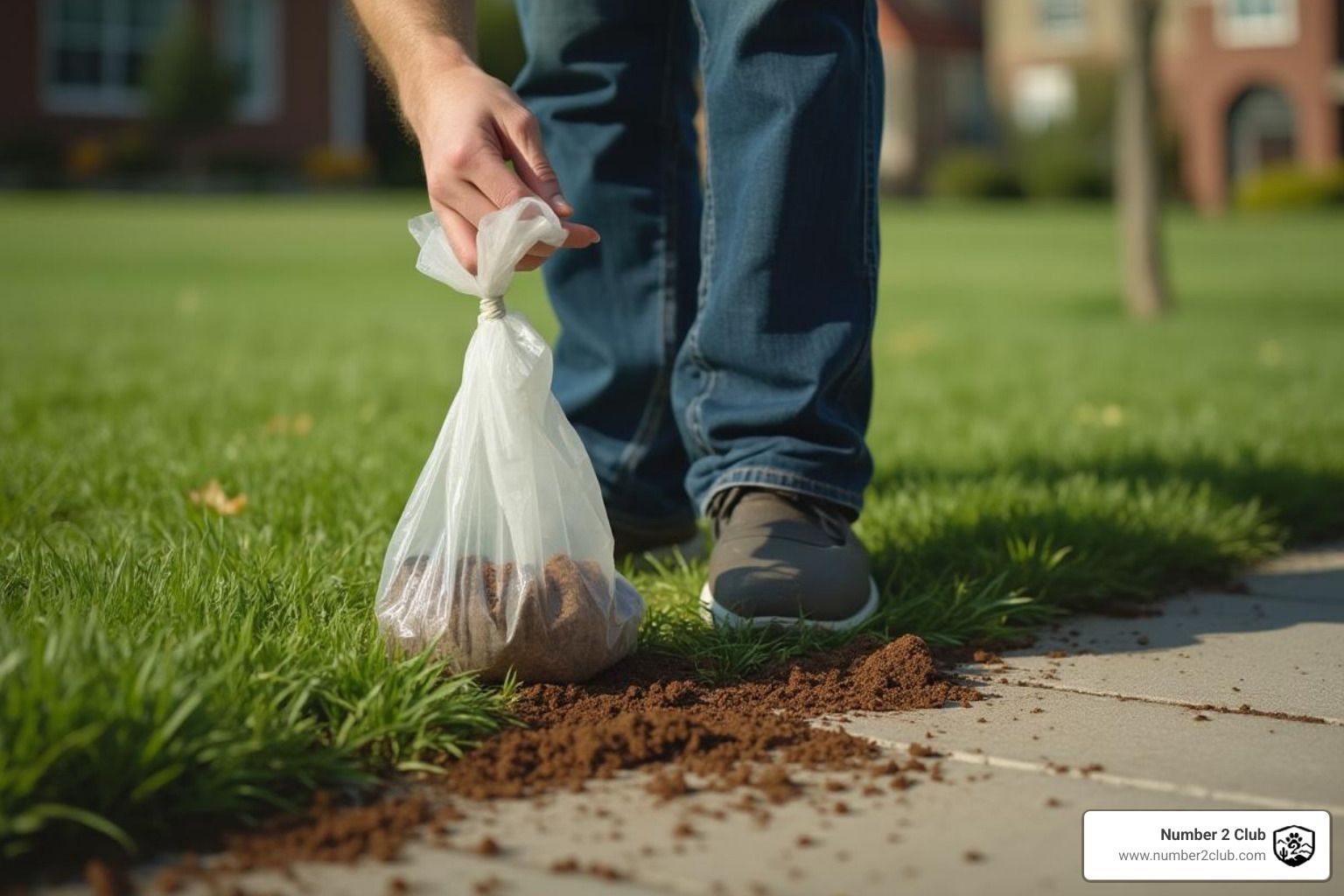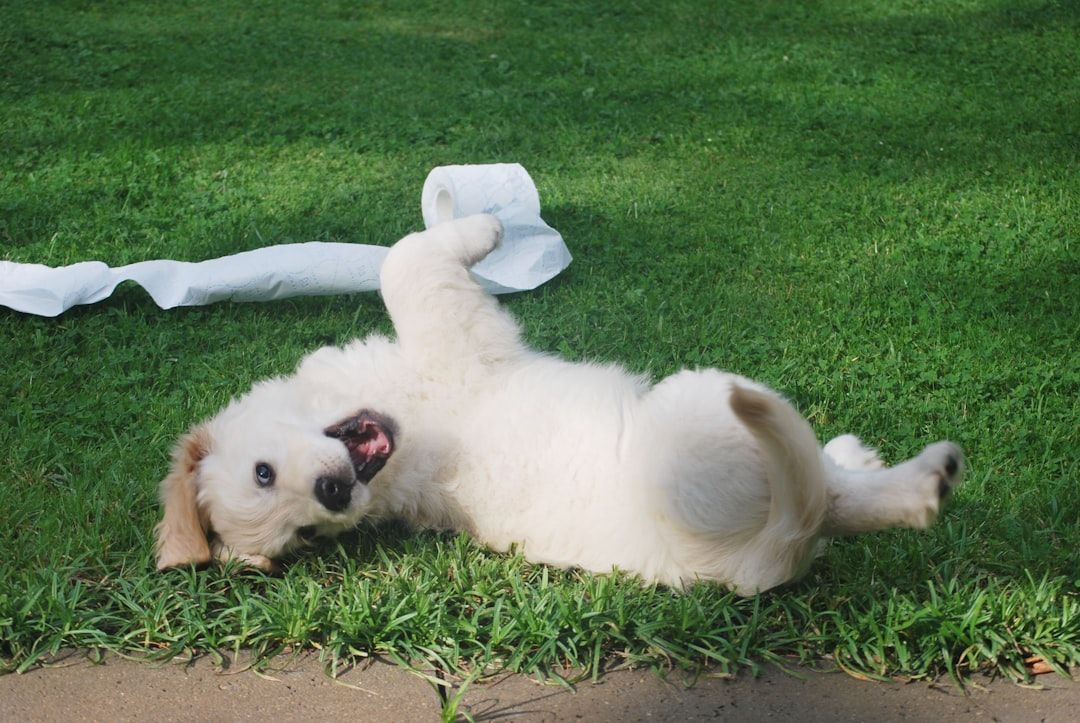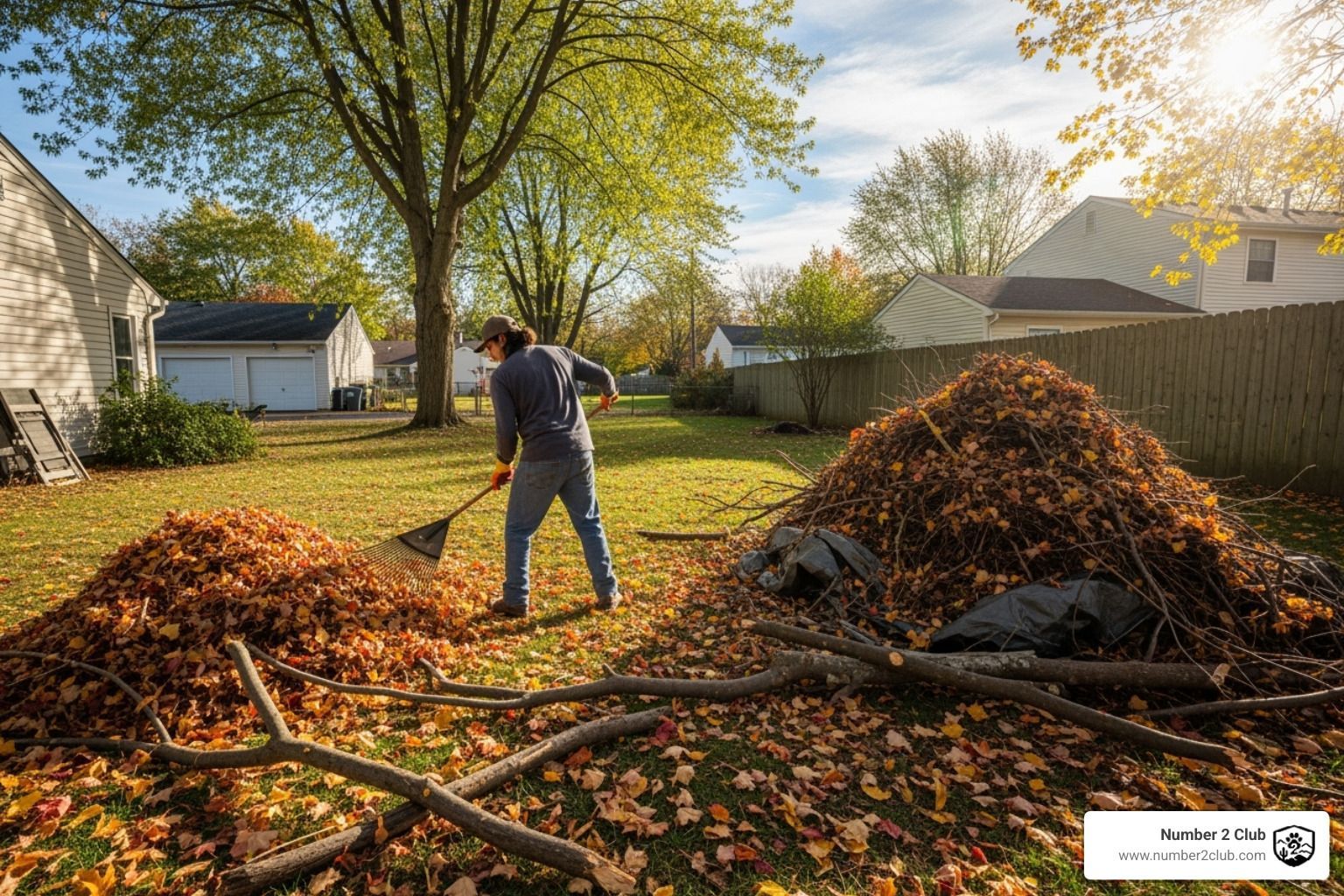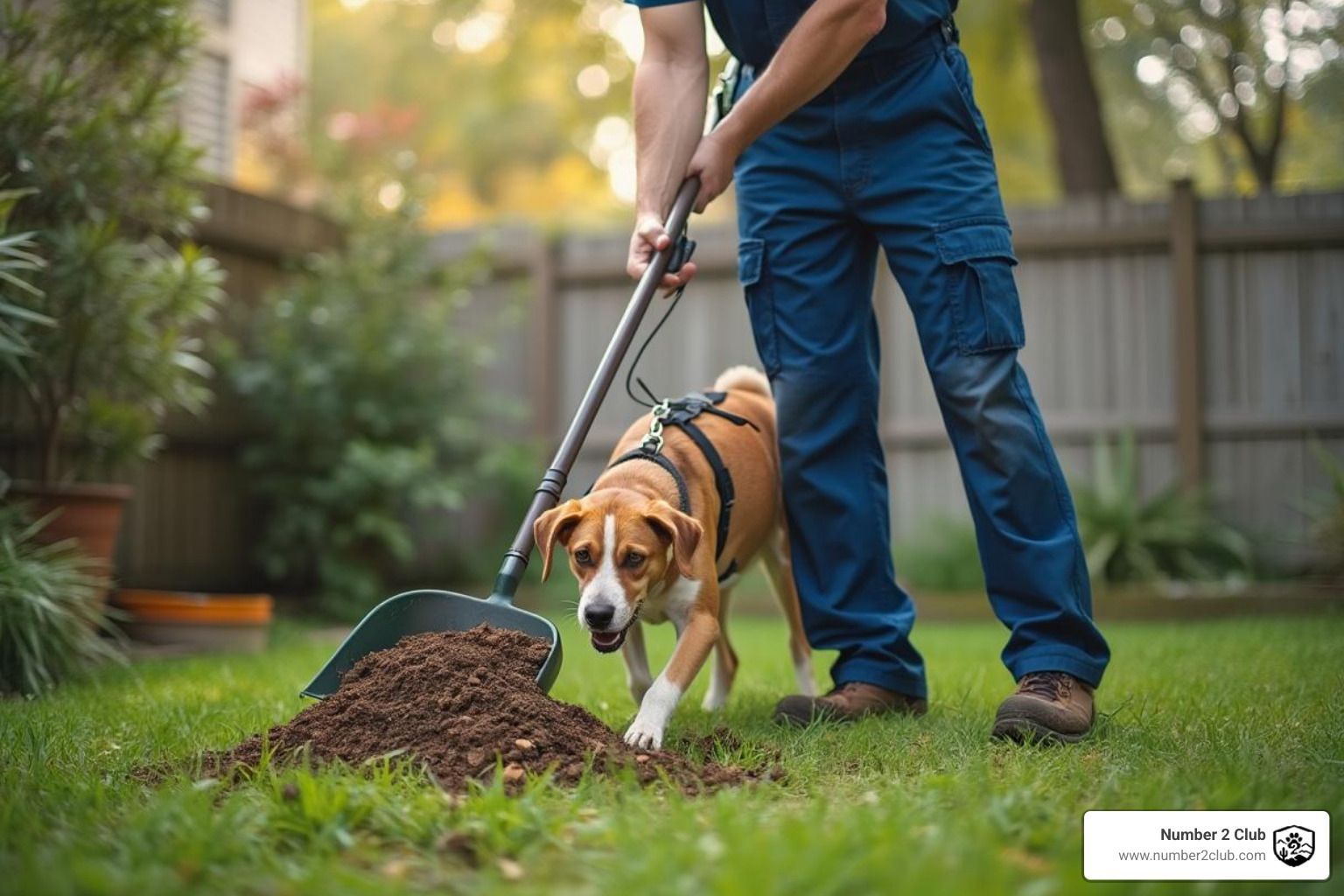The Scoop on Starting a Pet Waste Removal Business
Why Starting a Pet Waste Removal Business Makes Perfect Sense
A pet waste removal business offers one of the most accessible entry points into entrepreneurship, with startup costs under $1,000 and potential annual revenues reaching $250,000 or more.
Quick Start Guide:
- Startup Investment: $200-$1,000 for basic equipment and supplies
- Earning Potential: $20-$45 per visit, $500-$1,000+ monthly part-time
- Market Demand: 44.5% of US households own dogs
- Business Structure: Start as sole proprietor, consider LLC for growth
- Key Requirements: Basic permits, liability insurance, reliable vehicle
The numbers tell a compelling story. The average dog produces 274 pounds of waste annually, and with nearly 60 million dog-owning households in America, there's no shortage of demand. The waste management industry generates $25.1 billion yearly, while pet waste removal services typically achieve 50% gross margins.
This isn't just about convenience - it's about public health and environmental protection. A single gram of dog waste contains 23 million fecal coliform bacteria, which can contaminate water sources and cause serious illness.
The business model is simple: recurring customers pay $25-$125 monthly for regular yard cleanups. Many operators start part-time, earning $500-$1,000 monthly, then scale to full-time operations generating six-figure revenues.
I'm Joseph Lopez nc, owner of Number 2 Club, a premium pet waste removal business serving Arizona's West Valley communities including Litchfield Park, Goodyear, and Buckeye. Through hands-on experience building and scaling a pet waste removal business, I've learned the practical steps needed to launch and grow a successful operation.
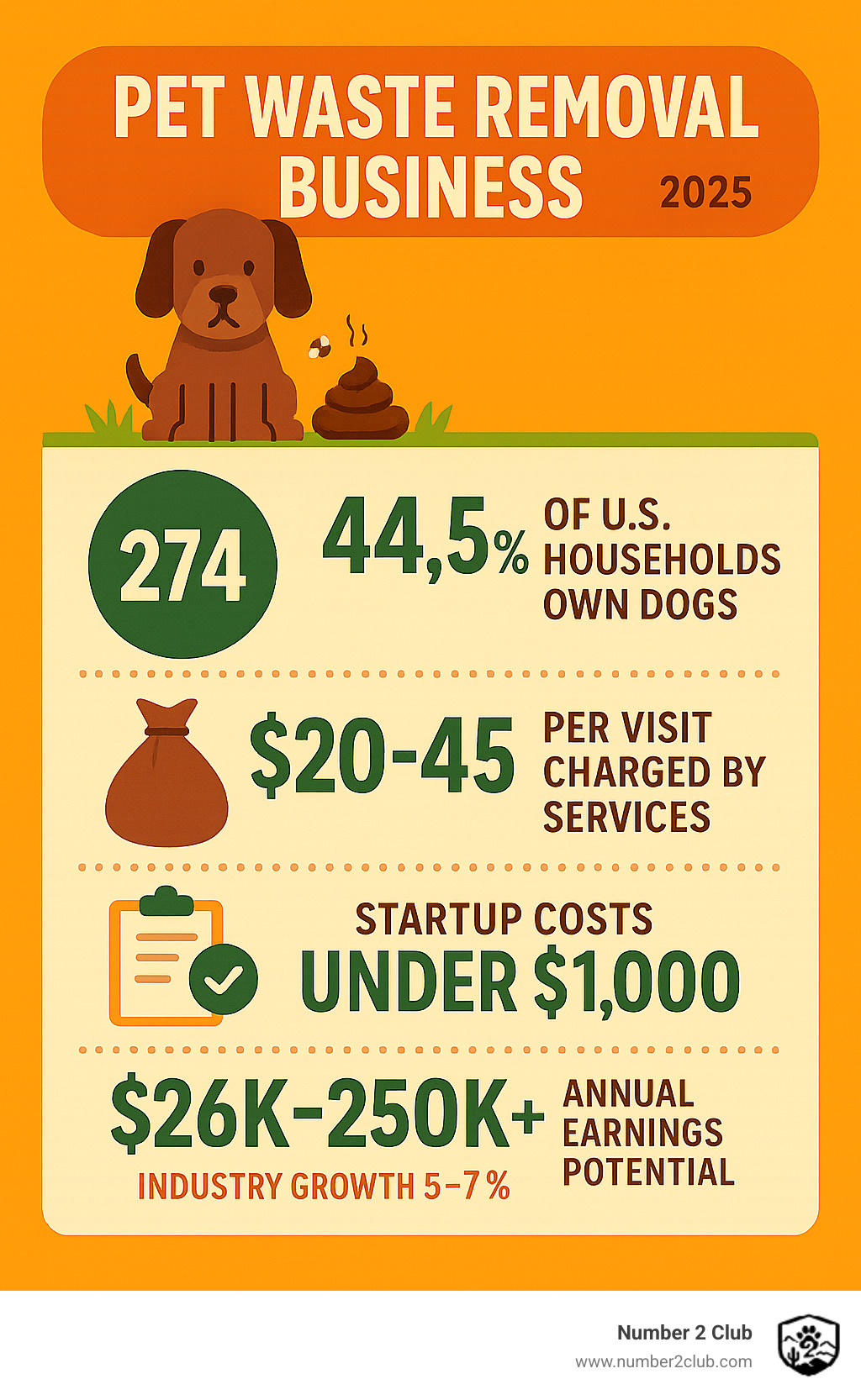
Market Opportunity & Earnings Potential
The pet waste removal business sits in the sweet spot of American consumer trends. Scientific research on pet ownership trends shows that 44.5% of American households now own dogs- that's nearly 60 million families. Each dog produces about 4 pounds of waste weekly, creating massive ongoing demand.
The pet services market is expected to reach $150.6 billion in 2024, with annual growth rates of 5-7%. This recession-resistant industry provides predictable recurring revenue.
Real-World Income Examples
Side-hustle operators typically earn $500-$1,000 monthly serving 20-40 customers on weekends. Full-time operators often earn $50,000-$100,000 annually serving 100-200 regular customers. Scaled businesses earn $250,000 or more annually by hiring multiple technicians.
The secret to maximizing earnings lies in efficient route planning and service density. Operators who cluster customers in specific neighborhoods can service more homes per hour, dramatically boosting profitability.
Pros & Cons Snapshot
Advantages include low startup costs under $1,000, recurring revenue model providing monthly stability, flexible scheduling, and scalable business model. The industry is recession-resistant with no special skills required.
Challenges include weather dependency, physical demands in outdoor conditions, potential social stigma, seasonal fluctuations, and equipment wear. Success requires focusing on solid business fundamentals and efficient operations.
Pet Waste Removal Business 101: Setup, Costs, Legal
Getting your pet waste removal business off the ground is surprisingly simple. Most new operators start as a sole proprietorship for minimal paperwork and simple taxes. As you grow, consider forming an LLC for liability protection.
| Aspect | Sole Proprietorship | LLC |
|---|---|---|
| Setup Cost | $0-$50 | $100-$500 |
| Liability Protection | None | Limited |
| Tax Complexity | Simple | Moderate |
| Credibility | Basic | Improved |
Get an EIN from the IRS (free online), set up a business bank account, and maintain simple bookkeeping records.
Pet Waste Removal Business Startup Costs
One of the most attractive aspects is how little money you need upfront. Basic equipment includes a pooper scooper ($15-$30), sturdy bags ($20-$40), protective gloves ($10-$20), and disinfectant supplies ($15-$25).
For a more professional setup, invest $500-$1,000 for better tools, commercial-grade bags, uniforms, and vehicle signage. Additional costs include licensing fees ($100-$500), software subscriptions ($30-$100 monthly), and an emergency fund ($1,000-$3,000).
Pet Waste Removal Business Licensing & Insurance
Most areas require a basic business license($50-$200 annually). Insurance is essential - general liability typically costs $300-$800 annually for $1 million protection. Commercial auto insurance costs $1,000-$3,000 annually but is legally required for business vehicle use.
For specific requirements in Arizona's West Valley communities like Litchfield Park, Goodyear, and Buckeye, visit more info about FAQ. The investment in proper licensing and insurance pays for itself through increased customer confidence.
Essential Tools, Supplies & Safety
Invest in quality equipment from day one. A good pooper scooper with ergonomic design costs $25-$75 but saves your back during long routes. Many operators prefer a rake and dustpan combo($20-$40) for larger yards.
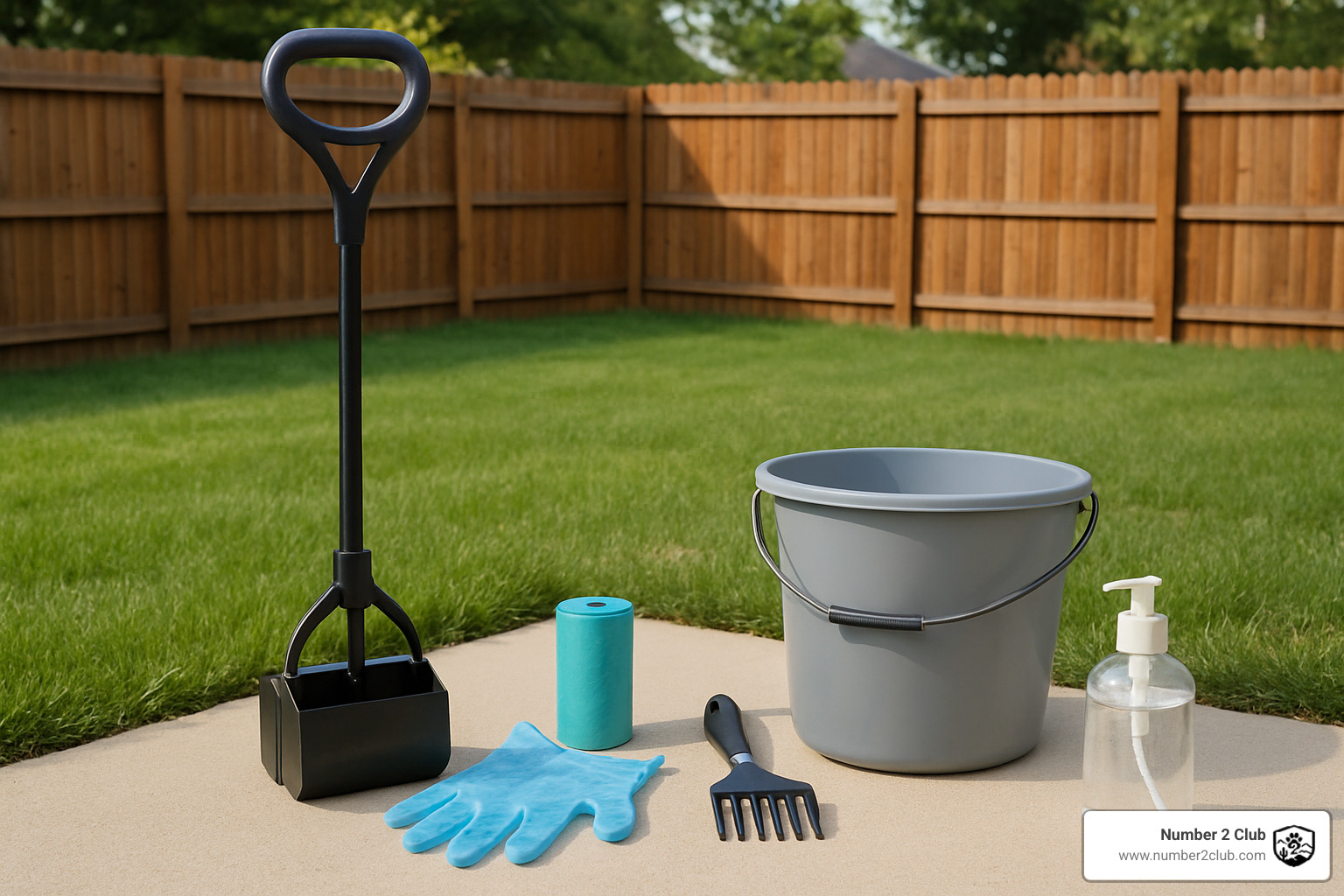
Heavy-duty waste bags are crucial - expect to spend $30-$60 per case. Always double-bag to prevent leaks. Safety equipment includes nitrile gloves ($20-$40 per box), waterproof boots, and eye protection ($10-$25).
Parvo prevention requires EPA-approved disinfectants between properties. This virus can survive for months and poses serious risks to dogs.
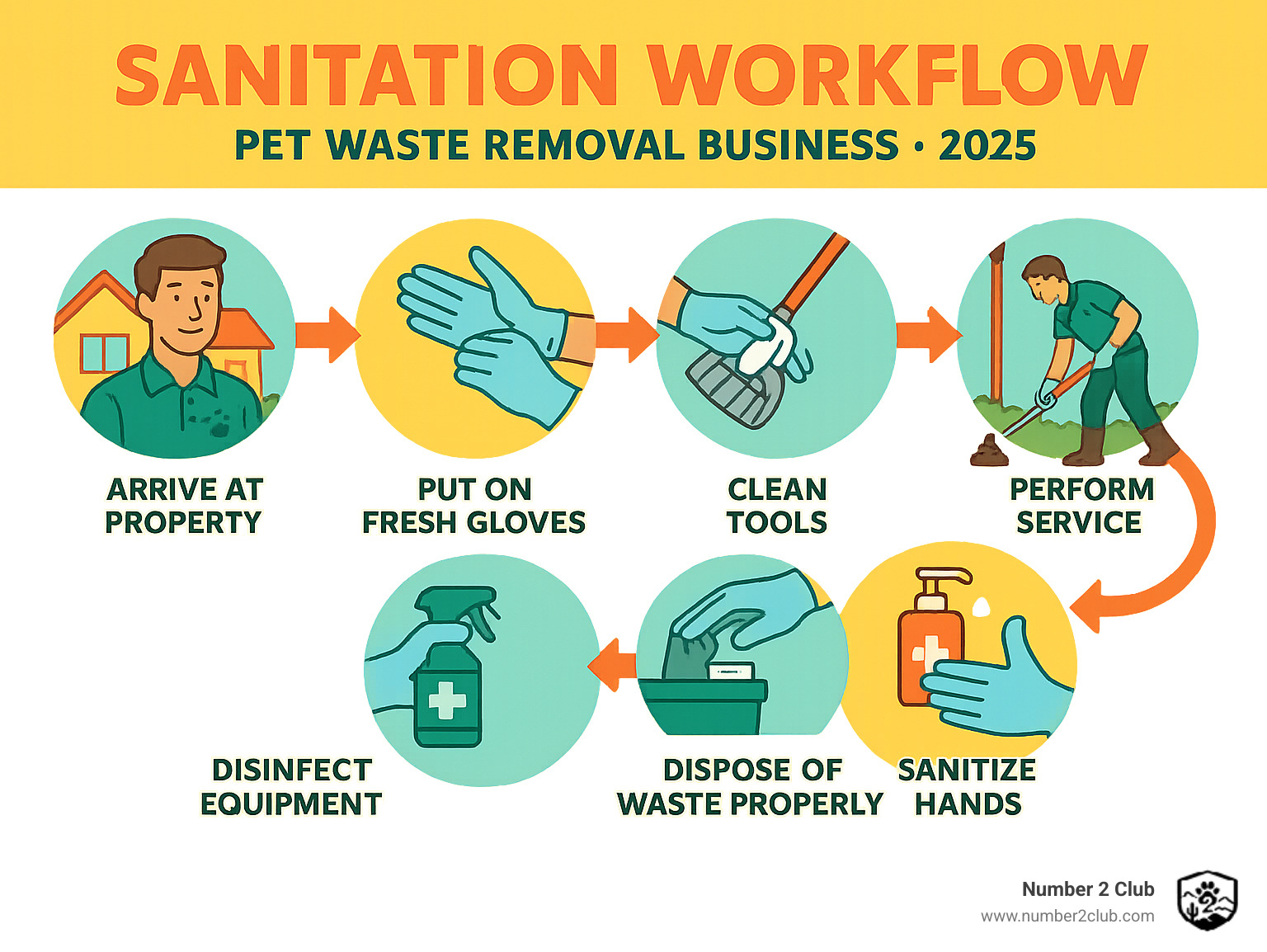
Route Software & CRMs
Technology transforms chaos into smooth operations. Sweep&Go was designed specifically for pet waste removal companies ($50+ monthly). Jobber serves over 200,000 service professionals with comprehensive field service management. YardBook offers simpler, less expensive options for solo operators.
Prioritize mobile accessibility, automated scheduling, customer notifications, and route optimization.
Safe Disposal Methods
Most residential services use the customer trash can method after proper bagging. Commercial dumpster arrangements work for high-volume operations. Follow EPA guidelines from scientific research on waste disposal and always double-bag waste to prevent leaks.
Pricing, Services & Route Efficiency
Setting the right prices makes or breaks your success. Use tiered pricing based on actual work involved. One dog typically costs $22-$28 per weekly visit, two dogs cost $28-$35, and three or more dogs cost $35-$45.
Yard size and service frequency affect pricing. Weekly service gets the best rates, while bi-weekly customers pay $5-$10 more per visit. Initial cleanup fees of $50-$100 are standard for accumulated waste.
Add-on services boost revenue: yard deodorizing ($10-$20), sanitizing treatments ($15-$25), and litter box cleaning ($5-$10 per box).
Route efficiency is crucial. Limit drive time to 5 minutes or less between customers by focusing on specific neighborhoods. One technician can handle 20-30 customers daily when routes are properly planned.
For commercial opportunities, more info about Commercial Services provides detailed pricing information.
Service Menu Ideas
Core services include weekly scooping, bi-weekly service, and monthly deep cleaning. One-time cleanups are goldmines, often paying $75-$150. Seasonal services like spring cleanup can bring $75-$150 per customer.
Commercial opportunities include HOA communities, apartment complexes, and dog parks requiring regular maintenance.
Route Planning Best Practices
Geographic clustering should be your obsession. Focus on dominating specific neighborhoods rather than accepting customers everywhere. Use referral incentives to encourage existing customers to recommend neighbors.
Target a 45-minute radius from your home base and build consistent scheduling around customer preferences while grouping them geographically.
Marketing, Customer Acquisition & Growth
Building a successful pet waste removal business requires consistent marketing and exceptional customer service.
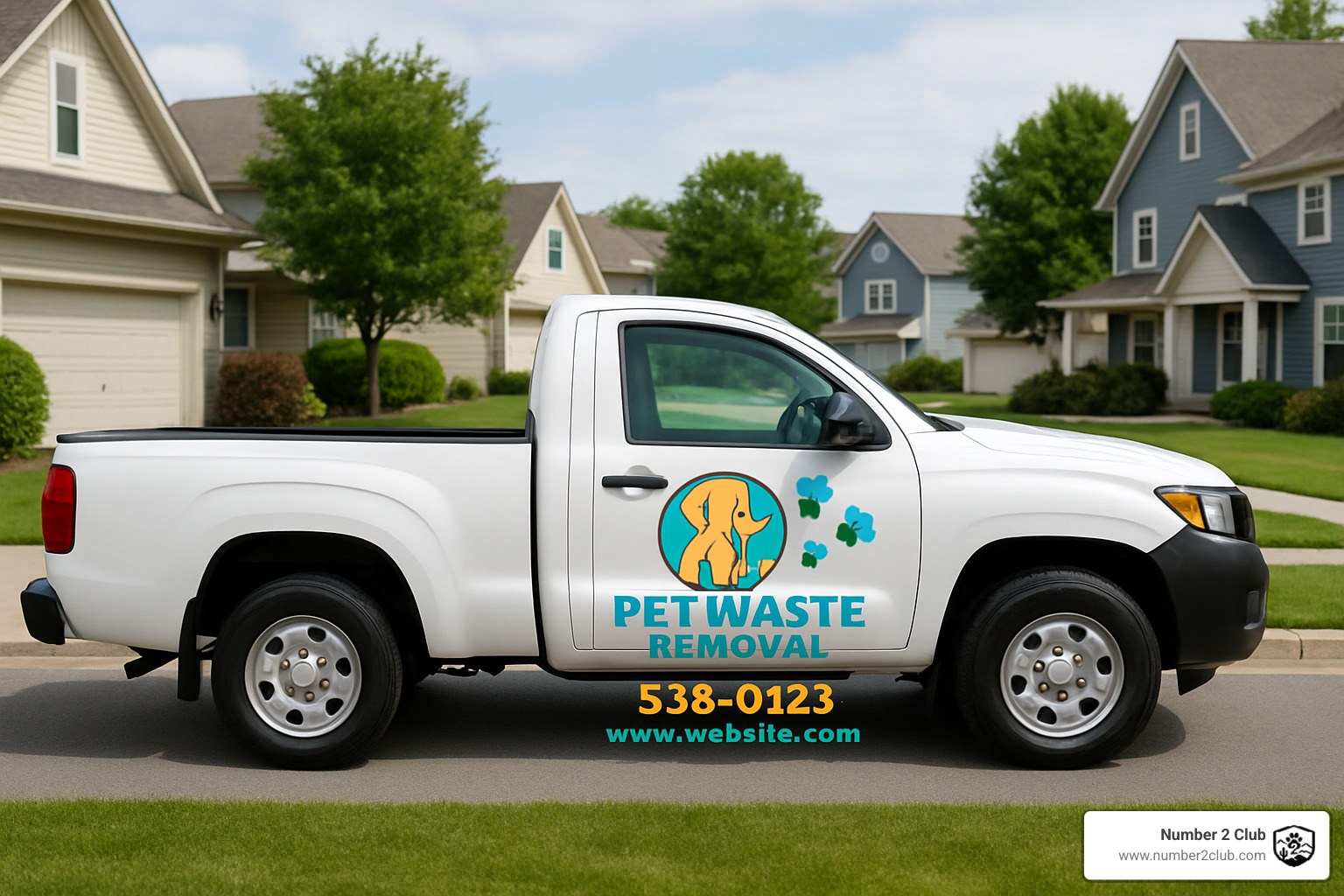
Your brand should be simple, memorable, and professional. Vehicle branding transforms your truck into a mobile billboard - one operator reported significant growth after investing in vehicle wrapping.
Local SEO forms your digital marketing backbone. Complete your Google Business Profile with photos and reviews. Keep NAP information consistent across listings and actively encourage customer reviews.
Traditional marketing works well: door hangers target specific neighborhoods, flyers at pet stores reach dog owners directly, and referral programs often provide the highest ROI.
Online Presence Essentials
Your website serves as your digital storefront. Include mobile-responsive design, clear service descriptions, pricing information, and online booking. Customer testimonials provide social proof.
Content marketing through blog posts about pet care tips improves search rankings. Focus social media on Facebook Business Pages for local engagement and Google Reviews for search rankings.
For comprehensive guidance, visit more info about Dog Waste Cleanup Company.
Scaling Beyond Solo Operator
Growing requires systems and people management. Hiring considerations prioritize reliability and require background checks. Training systems must cover safety protocols, customer service standards, and route efficiency.
Growth strategies include geographic expansion, service diversification, and commercial contracts. Document processes, train thoroughly, and maintain quality standards as you scale.
Risks, Insurance & Environmental Responsibility
Running a pet waste removal business comes with manageable risks that smart operators plan for. Common concerns include animal safety, property damage, and weather challenges.
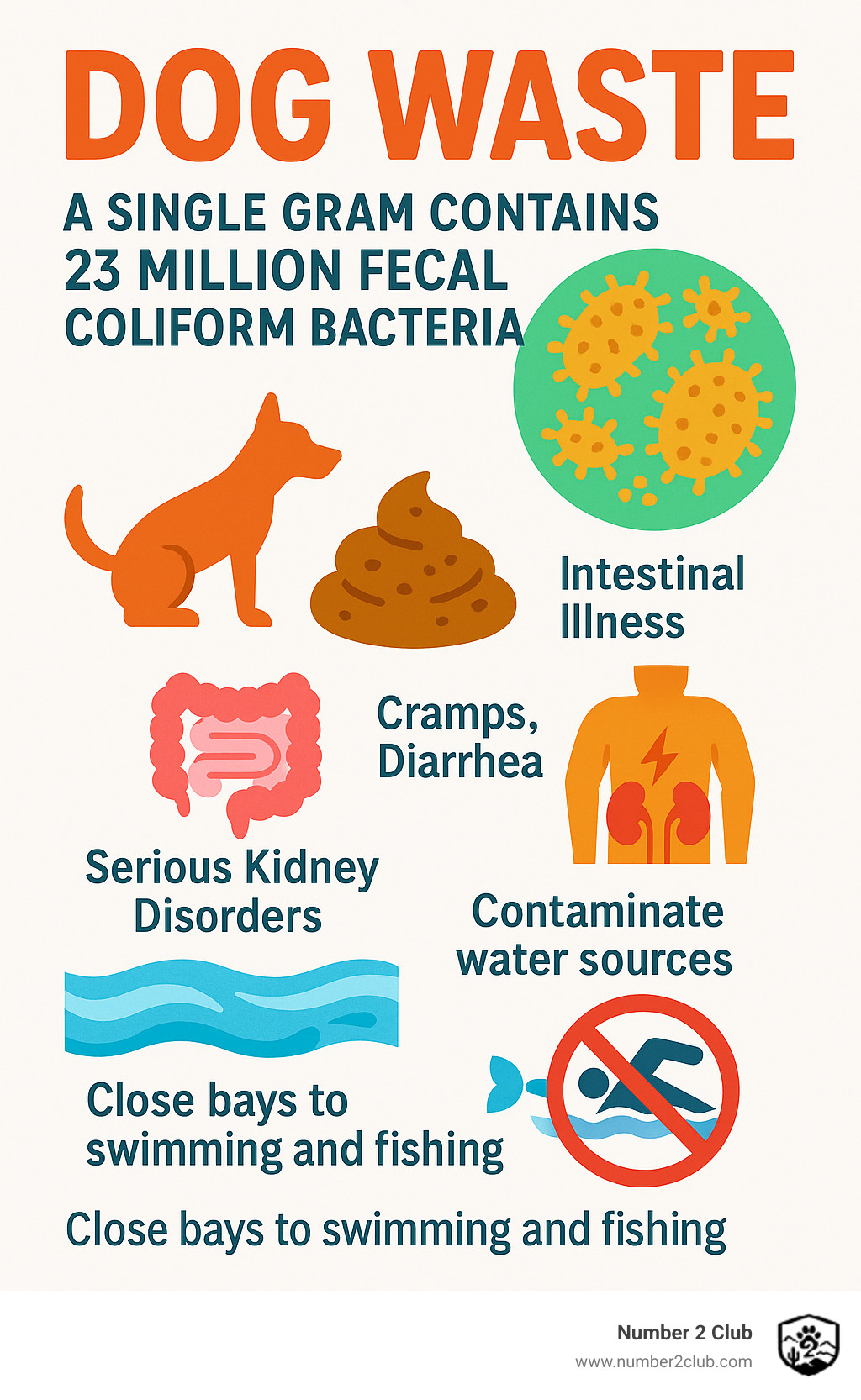
Insurance coverage isn't optional. General liability insurance costs $300-$800 annually, commercial auto insurance costs $1,000-$3,000 annually, and professional bonding costs $100-$300 annually.
Environmental responsibility extends beyond cleanup. Dog waste contains 23 million fecal coliform bacteria per gram, causing serious health risks. When not properly collected, it contaminates water sources and can force beach closures.
Sustainable practices include biodegradable bags, fuel-efficient vehicles, and route optimization. Community education about health risks builds trust and demonstrates expertise.
Professional operators view these challenges as opportunities to demonstrate value by handling risks responsibly and educating customers about health and environmental benefits.
Frequently Asked Questions about Pet Waste Removal Business
How much can I charge per visit?
Most successful operators charge $20-$45 per visit, depending on location and services. Urban areas support premium pricing, while rural communities expect budget-friendly rates. Add $5-$10 for each additional dog beyond the first.
Yard size matters - use simple small/medium/large pricing. Weekly customers pay less per visit than monthly ones. Add-on services like deodorizing can boost average tickets significantly.
Do I need special permits to haul dog waste?
Most areas require basic business licensing, but specialized permits vary by location. Start with your city's business licensing department for exact requirements. Some cities treat pet waste removal like any service business, others have specific waste hauling regulations.
Proper licensing protects you legally and builds customer credibility. Insurance companies also require valid licenses to honor claims.
What CRM software works best for scheduling?
Specialized pet waste software offers industry-specific features. General field service platforms work well for expansion plans. Mobile accessibility tops the priority list - you need smartphone access for field work.
Route optimization saves significant time and fuel costs. Automated customer communication sets professional operations apart. Start simple and grow into sophisticated features as your customer base expands.
Conclusion
Starting a pet waste removal business offers one of the most accessible paths to entrepreneurship. After building Number 2 Club in Arizona's West Valley, I can confidently say this industry provides genuine opportunity to build wealth while serving essential community needs.
With nearly 60 million dog-owning households and each dog producing 274 pounds of waste annually, you're looking at a market that won't disappear. This recession-resistant business provides steady income even during economic downturns.
The path forward is straightforward: Start with basic equipment under $1,000, focus on exceptional service, and reinvest profits into growth. Whether seeking extra income or building a full-time enterprise, the model adapts to your goals.
Success depends on taking action. Research your local market, obtain proper licensing and insurance, purchase essential equipment, and launch with your first customers. Every successful operator started exactly where you are now.
The pet waste removal industry has room for dedicated entrepreneurs who understand that success comes from consistent service delivery and genuine customer care. At Number 2 Club, we've proven that proper planning, quality service, and community focus create thriving businesses.
The market is ready, the demand is real, and the opportunity is yours. Take that first step today and find why thousands of entrepreneurs have found success in the pet waste removal business.
For detailed guidance on building your operation, visit more info about Pet Waste Cleanup Business to learn from our experience serving Arizona's pet-owning communities.


